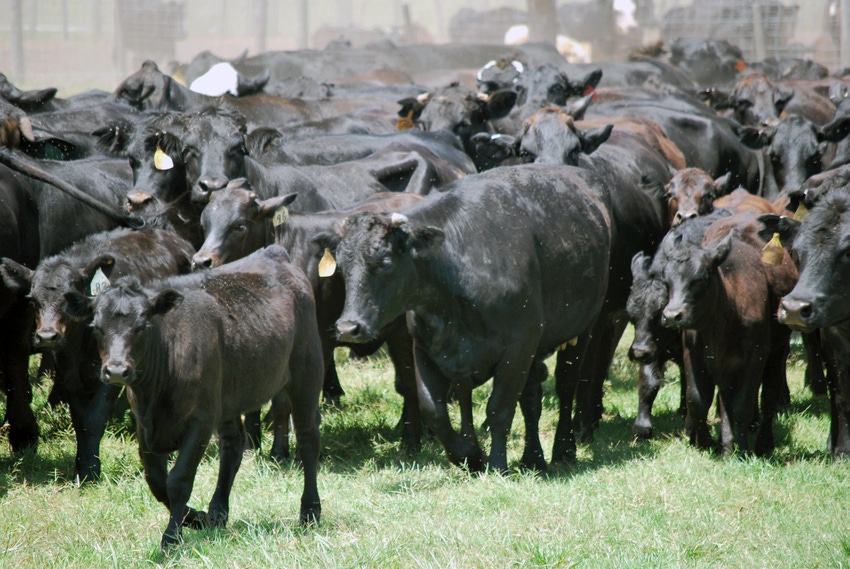November 1, 2016

There are few common causes of sudden death in livestock that farmers and their veterinarians need to be aware of in late summer and early fall in the Southeast
Lee Jones, University of Georgia veterinarian, recommends having an animal that dies suddenly with unknown causes to have a thorough autopsy done by a veterinarian.
Some common causes, Lee says, for uncommon cattle deaths are:
No. 1 - Anaplasmosis
This is caused by a parasite that attacks the red blood cells of cattle. Infected cattle will become anemic, feverish and may die. Subtle symptoms include getting tired quickly. If an animal wants to lay down or lag behind the herd while being moved check their mucous membranes (gums or vulva in cows) to see if they are pale. Anaplasmosis affects adults more than calves. In some cases it can cause abortion or weak calves in heavy bred cows. Typically, animals die one or two here and there, a few days apart. It is diagnosed by using a blood smear. Cattle are very valuable these days so have blood samples taken of all cows found down but still alive. Blood samples can tell us if the problem is only with the individual cow or might affect more in the herd.
No. 2 - Blue green algae toxicity
With low rainfall ponds are getting lower. This is an ideal environment for a blue green algae bloom. Blue green algae or cyanobacter produces toxins. Some of these toxins are fast acting and can kill an animal shortly after drinking. If you find dead livestock or wildlife near water get other animals away from the water source and have the carcasses necropsied as soon as possible. Dead animals may decompose quickly during hot days and be useless information. Cyanobacter can also be deadly to humans and pets so suspect water should be avoided by all. Suspicious water can be tested for microscopic algae and toxins like mycrocystin.
No. 3 - Perilla mint
In late summer and early fall, plants like perilla mint might be all that is green. Cows that eat large amounts of perilla mint can experience a severe respiratory attack that might resemble asthma or choking. They will have difficulty breathing and may get panicky. Their mucous membranes turn blue because they can't get enough oxygen. If you find Perilla in your pastures (Google it if you don't know what it looks like), it needs to be sprayed and keep cows off until it is dead and withered. Treatment involves anti-inflammatories and steroids to open airways. Severely affected cattle often die. Antibiotics aren't helpful because it isn't caused by an infection.
No. 4 - Nitrates
If there are a lot of nitrate accumulating plants in your field keep it in the back of your mind. Drought stress, applications of 2-4 D, recent fertilization and sulfur deficient soils can be risk factors for plants to accumulate nitrates. Most animals succumb to nitrates before they can be treated but IV methylene blue (fish tank treatment) is the best treatment.
No. 5 - Prussic acid
Typically, we think of prussic acid poisoning after a frost but the same plants that accumulate nitrates can also have prussic (cyanide) acid. Plants that are stressed due to drought or sprayed with herbicide can also form prussic acid in the leaves and stems. Treatment for prussic acid is different than that of nitrate toxicity but animals usually die too fast for treatment to be effective. If you have had sudden deaths in cattle it is important to find out why to determine the risk to the rest of the herd. Cattle are very valuable right now so diagnosing the problem can be money and time well spent.
About the Author(s)
You May Also Like






